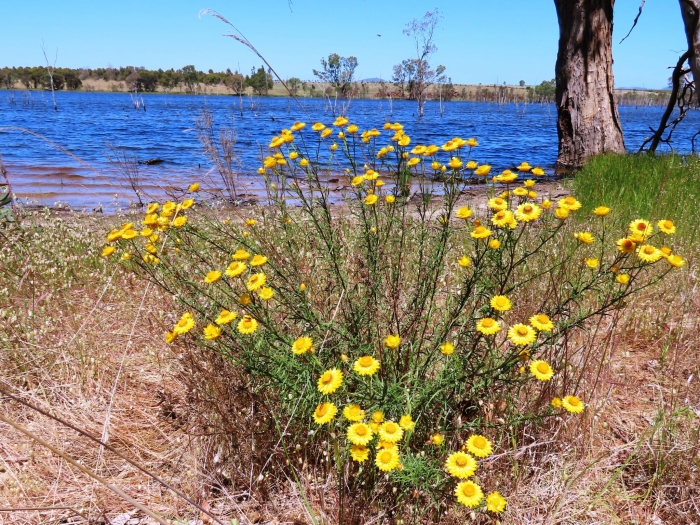Sticky Everlasting
(Xerochrysum viscosum)
Sticky Everlasting (Xerochrysum viscosum)
/
/

Elspeth Swan
CC BY 4.0
Image By:
Elspeth Swan
Recorded By:
Copyright:
CC BY 4.0
Copyright Notice:
Photo by: Elspeth Swan | License Type: CC BY 4.0 | License URL: http://creativecommons.org/licenses/by/4.0/ | Rights Holder: Elspeth Swan | Publisher: iNaturalist | Date Created: 2023-11-04T14:45:30-07:00 |














Estimated Native Range
Summary
Xerochrysum viscosum, commonly known as Sticky Everlasting, is an annual or sometimes perennial herb native to a variety of habitats in Australia, including Queensland, New South Wales, Victoria, and the Australian Capital Territory. It is typically found in open eucalypt woodlands, sclerophyll forests, and grasslands, where it thrives in well-drained soils. The plant grows to a height of 8-31 inches (20-80 cm) and is characterized by its highly branched structure and distinctive papery yellow inflorescence bracts that surround the central disc florets. The flowers are most prolific in spring and summer, and their bright coloration makes them quite showy.
Sticky Everlasting is valued for its drought tolerance and long-lasting flowers, which are often used in dried floral arrangements. It is suitable for rockeries, native plant gardens, and as a border plant in areas with dry climates. In cultivation, it requires minimal water once established, prefers well-drained soils, and enjoys full sun to part shade. While generally low-maintenance, it can be susceptible to root rot in poorly drained soils. There are no widely recognized cultivars, but its natural form is well-regarded for its ornamental qualities.CC BY-SA 4.0
Sticky Everlasting is valued for its drought tolerance and long-lasting flowers, which are often used in dried floral arrangements. It is suitable for rockeries, native plant gardens, and as a border plant in areas with dry climates. In cultivation, it requires minimal water once established, prefers well-drained soils, and enjoys full sun to part shade. While generally low-maintenance, it can be susceptible to root rot in poorly drained soils. There are no widely recognized cultivars, but its natural form is well-regarded for its ornamental qualities.CC BY-SA 4.0
Plant Description
- Plant Type: Herb, Subshrub
- Height: 1.5-3 feet
- Width: 1.5-2.5 feet
- Growth Rate: Moderate
- Flower Color: Yellow
- Flowering Season: Summer, Fall
- Leaf Retention: Evergreen
Growth Requirements
- Sun: Full Sun
- Water: Low
- Drainage: Medium, Fast
Common Uses
Border Plant, Butterfly Garden, Drought Tolerant, Low Maintenance, Rock Garden, Street Planting
Natural Habitat
native to a variety of habitats in Australia, including Queensland, New South Wales, Victoria, and the Australian Capital Territory
Other Names
Common Names: Yellow Paper Daisy
Scientific Names: , Xerochrysum viscosum, Aracium mauritianum, Bracteantha viscosa, Bracteantha viscosa, Crepis mauritiana, Helichrysum bracteatum var. viscosum, Helichrysum viscosum, Helichrysum viscosum, Helichrysum viscosum
GBIF Accepted Name: